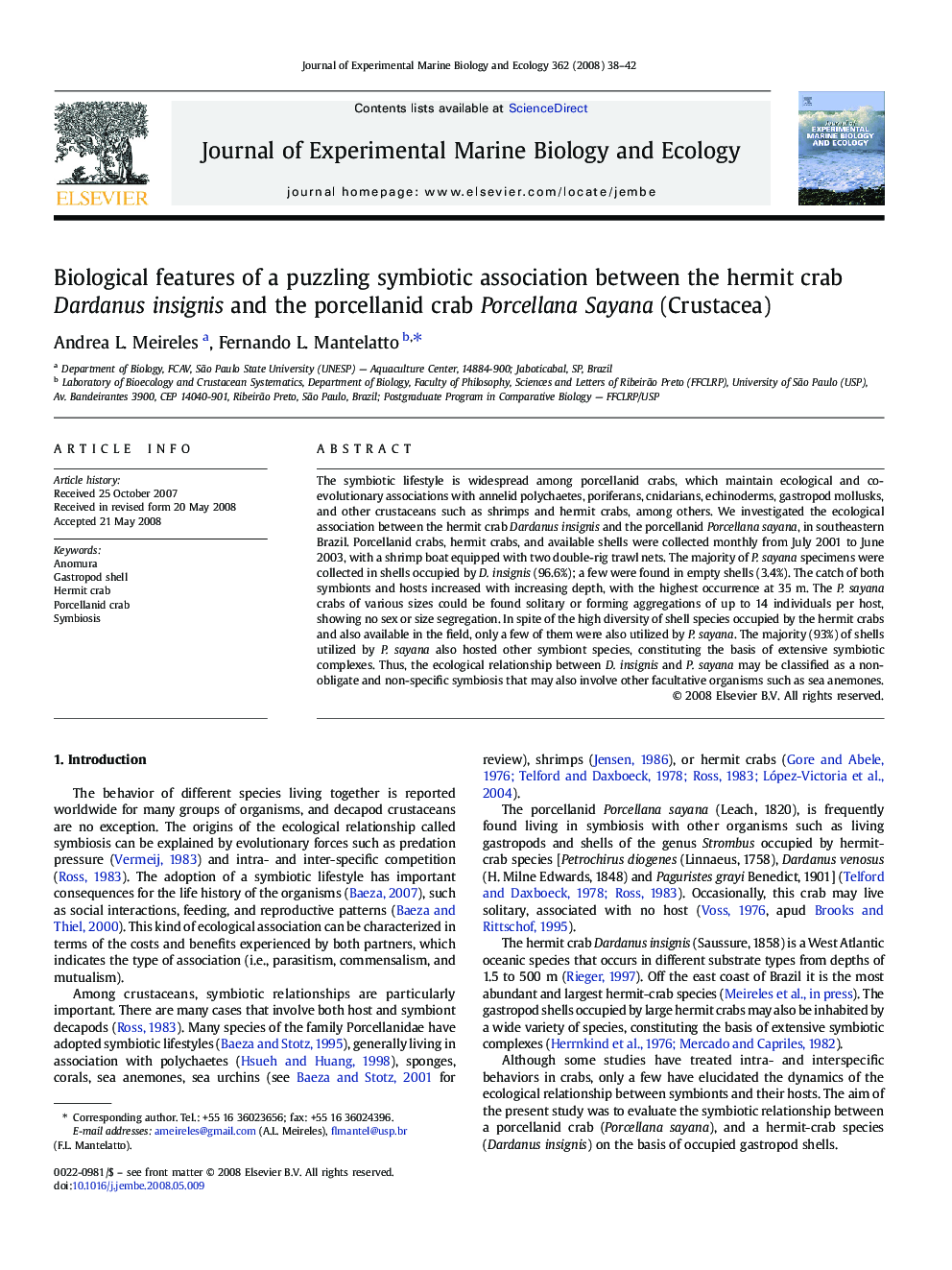| Article ID | Journal | Published Year | Pages | File Type |
|---|---|---|---|---|
| 4397295 | Journal of Experimental Marine Biology and Ecology | 2008 | 5 Pages |
The symbiotic lifestyle is widespread among porcellanid crabs, which maintain ecological and co-evolutionary associations with annelid polychaetes, poriferans, cnidarians, echinoderms, gastropod mollusks, and other crustaceans such as shrimps and hermit crabs, among others. We investigated the ecological association between the hermit crab Dardanus insignis and the porcellanid Porcellana sayana, in southeastern Brazil. Porcellanid crabs, hermit crabs, and available shells were collected monthly from July 2001 to June 2003, with a shrimp boat equipped with two double-rig trawl nets. The majority of P. sayana specimens were collected in shells occupied by D. insignis (96.6%); a few were found in empty shells (3.4%). The catch of both symbionts and hosts increased with increasing depth, with the highest occurrence at 35 m. The P. sayana crabs of various sizes could be found solitary or forming aggregations of up to 14 individuals per host, showing no sex or size segregation. In spite of the high diversity of shell species occupied by the hermit crabs and also available in the field, only a few of them were also utilized by P. sayana. The majority (93%) of shells utilized by P. sayana also hosted other symbiont species, constituting the basis of extensive symbiotic complexes. Thus, the ecological relationship between D. insignis and P. sayana may be classified as a non-obligate and non-specific symbiosis that may also involve other facultative organisms such as sea anemones.
